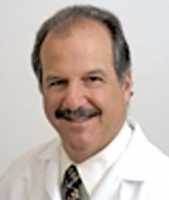12 Oct DuraGraft® Vascular Graft Evaluated to Prevent Vein Graft Failure After CABG
MedicalResearch.com Interview with:
Miguel Haime, MD
VA Boston Healthcare System and Boston Medical Center
Boston, MA
Dr. Haime discusses an abstract about Somahlution DuraGraft during a rapid response session at the 2016 annual meeting of the European Association for Cardio-Thoracic Surgery (EACTS; 1–5 October, Barcelona, Spain)
MedicalResearch.com: What is the background for this study? What are the main findings?
Response: Coronary artery bypass grafting (CABG) surgery is the standard of care for multi-vessel coronary heart disease. During CABG, we use saphenous vein grafts as bypass conduits for surgical revascularization. Pathophysiological changes that occur in vein grafts during the surgical procedure can compromise the durability and patency of the graft and increase the risk of vein graft failure.
At the European Association for Cardio-Thoracic Surgery (EACTS) annual meeting, we presented results from a retrospective, non-randomized study conducted at VA Boston Healthcare System to evaluate the Real World Evidence of DuraGraft®, a vascular graft treatment designed to prevent vein graft failure after CABG.
In a total of 2,436 consecutive patients who underwent CABG surgery with at least one saphenous vein graft, treatment of grafts with DuraGraft was associated with statistically significant lower risks for non-fatal myocardial infarction, repeat revascularization, and a composite of all major adverse cardiac events (MACE) over 12+ years of patient follow up. The risk of myocardial infarction beginning as early as 30 days following surgery was reduced by 36%. This treatment effect on myocardial infarction rate was even more pronounced beginning at three years following surgery, with an adjusted risk reduction of 50%. DuraGraft treatment also provided 38% long-term reductions in the need for repeat revascularization and a 29% reduction in the occurrence of MACE.
MedicalResearch.com: What should readers take away from your report?
Response: In most CABG procedures, surgeons do not currently take steps to protect the graft during the surgery. These new findings highlight that the protective effects of DuraGraft treatment of grafts present significant advantages in long-term clinical follow up post-CABG surgery, which supports a growing body of research demonstrating the importance of graft treatment during surgery and its potentially significant role in reducing graft failure for the CABG patients.
MedicalResearch.com: What recommendations do you have for future research as a result of this study?
Response: The long-term success of CABG surgery is dependent on the ability of the new bypass graft to stay open and supply blood to the heart. It makes sense that proper harvesting of the vein and its treatment during surgery is critical. A prospective study evaluating DuraGraft is underway and all graft handling steps should be evaluated and optimized.
Additionally, DuraGraft is the first commercial product based on the GALA technology platform that is licensed by Somahlution, from the U.S. Department of Veterans Affairs and Harvard. The technology is being evaluated in other surgical indications including vascular surgery and organ transplant surgery, however, we need further research in this area.
MedicalResearch.com: Is there anything else you would like to add?
Response: DuraGraft treatment was launched in Europe and other global markets in 2015 for CABG and peripheral bypass operations, however, is currently not commercially available in the U.S. as yet. We hope that it will be FDA approved soon, to be able to treat our vein grafts and prevent graft failure.
MedicalResearch.com: Thank you for your contribution to the MedicalResearch.com community.
Citation:
European Association for Cardio-Thoracic Surgery (EACTS) Annual Meeting
Note: Content is Not intended as medical advice. Please consult your health care provider regarding your specific medical condition and questions.
More Medical Research Interviews on MedicalResearch.com
[wysija_form id=”5″]
Last Updated on October 12, 2016 by Marie Benz MD FAAD

